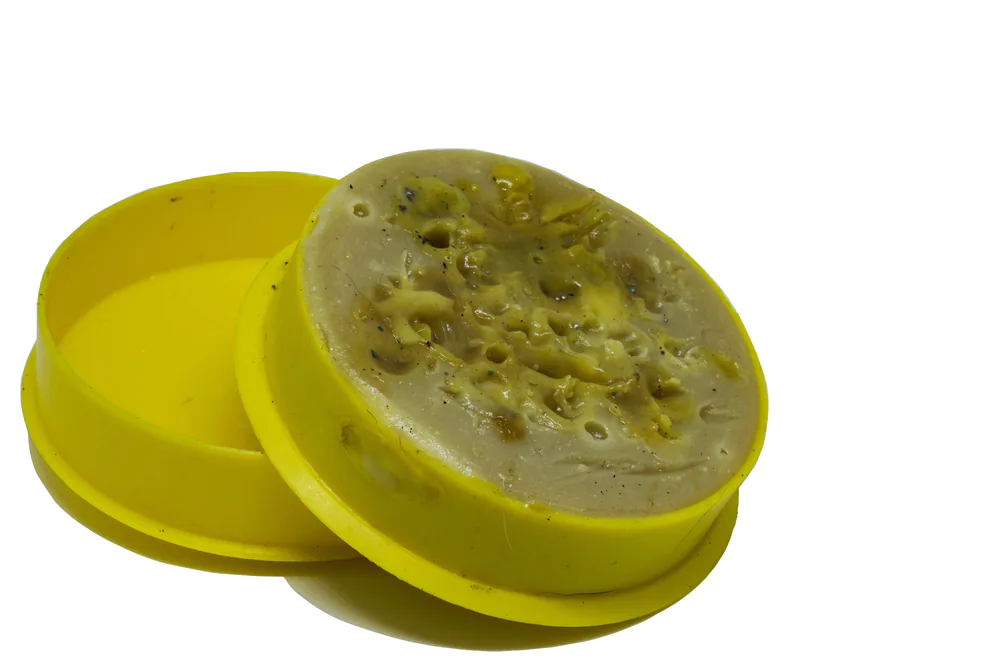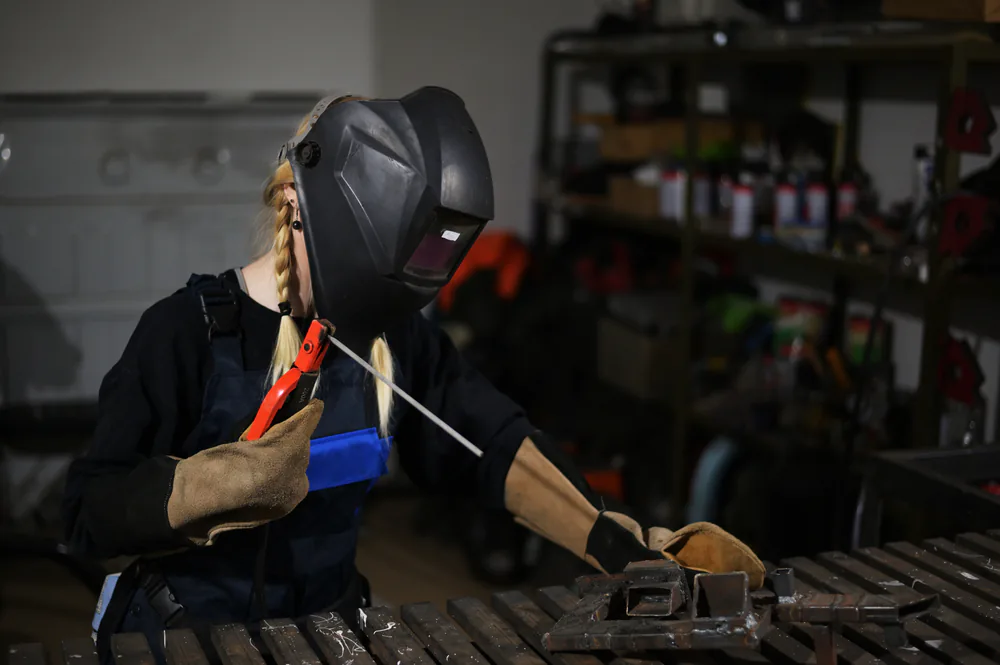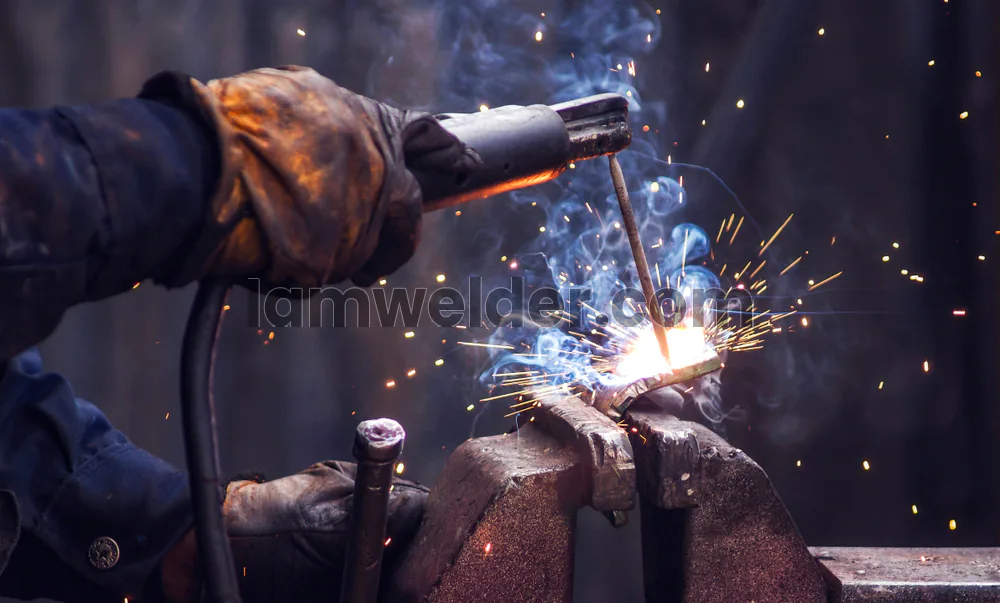Informational
Tinning Flux vs Paste Flux: Which One Should You Use?

When it comes to soldering, choosing the right type of flux is crucial for a successful outcome. Two popular options are tinning flux and paste flux, but how do you know which one to use? In this article, we will compare the characteristics of tinning and paste flux and provide guidance on which one is best for various soldering tasks.
Tinning flux and paste flux are both used in soldering, but tinning flux is better for pre-tinning, while paste flux is better for general-purpose soldering. Tinning flux prepares metal surfaces for soldering, while paste flux is made with a rosin or organic base and is better suited for use on a wider range of materials, including metals and ceramics.
Paste flux is also easier to apply and control, making it a popular choice among soldering professionals. Ultimately, the choice between tinning flux and paste flux depends on the specific application and materials being used.
Comparison Summary
| Characteristic | Tinning Flux | Paste Flux |
|---|---|---|
| Primary use | Pre-tinning | General-purpose soldering |
| Composition | Rosin, zinc chloride, hydrochloric acid | Rosin, organic acids, solvents |
| Ease of application | More difficult | Easier to apply and control |
| Material suitability | Metals | Metals and ceramics |
| Improvement in solderability | Yes | Yes |
| Reduced oxidation | Yes | Yes |
| Joint quality | Better | Stronger, more reliable joints |
| Cost | Relatively inexpensive | Can be more expensive |
| Availability | Widely available | Widely available |
| Corrosive | Yes | No |
| Toxicity | Yes, depending on the formulation | Some formulations may be low-odor |
| Leaves residue | Yes | Yes |
| Heat sensitivity | May break down or lose effectiveness at high temperatures | May break down or lose effectiveness at high temperatures |
| Precise application | No | Yes |
| Reduced splatter | May splatter | Less likely to splatter during soldering |
| Shelf life | Longer | Shorter |
| Environmental concerns | No specific concerns | May contain harmful chemicals if not handled properly |
Tinning Flux
Tinning flux is a type of soldering flux that is used to prepare metal surfaces for soldering, particularly for the purpose of thinning.
Tinning is a process that involves coating a metal surface with a layer of tin. This is often done to prevent the metal from oxidizing or to improve its appearance.
Chemical Composition of Tinning Flux
Tinning flux is typically made up of a mixture of chemicals, including rosin, zinc chloride, and hydrochloric acid. The rosin acts as a fluxing agent which helps to remove any oxide layers on the metal surface and promotes the flow of solder.
The zinc chloride and hydrochloric acid serve as activators which help to clean the metal surface and promote adhesion.
Benefits of Using Tinning Flux
1- Improved solderability: Tinning flux helps to prepare metal surfaces for soldering by removing oxide layers and promoting adhesion, resulting in improved solderability.
2- Reduced oxidation: By removing oxide layers, tinning flux can help to reduce the likelihood of oxidation during the soldering process.
3- Better joint quality: Tinning flux promotes the flow of solder and can help to produce stronger, more reliable joints.
4- Cost-effective: Tinning flux is relatively inexpensive and can be used to prepare a wide range of metals for soldering.
5- Widely available: Tinning flux is readily available at hardware stores, online retailers, and other sources, making it easy to obtain.
Drawbacks of Using Tinning Flux
1- Corrosive: Tinning flux can be corrosive and may damage some metals if left in contact for too long.
2- Toxic: Some tinning flux formulations contain chemicals that can be harmful if ingested or inhaled.
3- Leaves residue: Tinning flux can leave behind residue that can be difficult to remove and may interfere with subsequent processing steps.
4- Heat sensitivity: Tinning flux may break down or lose effectiveness at high temperatures, which can limit its usefulness in some applications.
When to Use?
Tinning flux is typically used in applications where the metal surface is being tinned or coated with a layer of tin. This is often done to prevent the metal from oxidizing or to improve its appearance. Tinning flux is commonly used in plumbing and metalworking applications.
Paste Flux
Paste flux is a type of soldering flux that is typically used in electronics and other applications where precision is required. It comes in a paste form which makes it easy to apply to the surfaces to be soldered.
Chemical Composition of Paste Flux
Paste flux is typically made up of a mixture of chemicals, including rosin, organic acids, and solvents. The rosin acts as a fluxing agent, which helps to remove any oxide layers on the metal surface and promotes the flow of solder.
The organic acids serve as activators, which help to clean the metal surface and promote adhesion. The solvents are used to adjust the viscosity of the paste and to make it easier to apply.
Benefits of Using Paste Flux
1- Easy to apply: The paste form of flux makes it easy to apply to the surfaces to be soldered, even in hard-to-reach areas.
2- Improved solderability: Paste flux helps to prepare metal surfaces for soldering by removing oxide layers and promoting adhesion, resulting in improved solderability.
3- Precise application: The paste form of flux allows for precise application, making it ideal for electronics and other applications where precision is required.
4- Reduced splatter: Paste flux is less likely to splatter during the soldering process, which can help to reduce the likelihood of damage to surrounding components.
5- Low odor: Some formulations of paste flux are low-odor, making them more pleasant to work with than other types of flux.
Drawbacks of Using Paste Flux
1- Leaves residue: Paste flux can leave behind residue that can be difficult to remove and may interfere with subsequent processing steps.
2- Heat sensitivity: Paste flux may break down or lose effectiveness at high temperatures, which can limit its usefulness in some applications.
3- Cost: Paste flux can be more expensive than other types of flux, particularly if a high-quality formulation is needed.
4- Shelf life: Paste flux typically has a shorter shelf life than other types of flux and may need to be replaced more frequently.
5- Environmental concerns: Some formulations of paste flux contain chemicals that may be harmful to the environment if not handled properly.
When to Use?
Paste flux, on the other hand, is typically used in electronics and other applications where precision is required. The paste form of flux allows for precise application, making it ideal for soldering small components and other delicate work.
Tinning Flux vs Paste Flux: Which One is Better?
The choice between tinning flux and paste flux largely depends on the specific soldering task at hand.
Tinning flux is better suited for applications where the metal surface is being tinned such as plumbing and metalworking.
Paste flux is better suited for electronics and other applications where precision is required such as soldering small components.
In general, paste flux is more versatile than tinning flux and can be used in a wider range of applications.
However, tinning flux may be more effective in some specific situations such as when tinning copper pipes.
Ultimately, the choice between tinning flux and paste flux depends on the specific soldering task and the materials being soldered.
Applications of Tinning Flux
Tinning flux is commonly used in applications where the metal surface is being tinned or coated with a layer of tin. Here are some specific applications where tinning flux is commonly used:
1- Plumbing: Tinning flux is commonly used in plumbing applications such as soldering copper pipes.
The flux helps to remove any oxide layers on the metal surface and promotes the flow of solder resulting in a strong and leak-free joint.
2- Metalworking: Tinning flux is also commonly used in metalworking applications, such as soldering sheet metal or other small parts.
The flux helps to remove any oxide layers on the metal surface and promotes adhesion resulting in a strong and durable joint.
3- Jewelry making: Tinning flux is sometimes used in jewelry making, particularly when soldering silver or other precious metals.
The flux helps to clean the metal surface and promote the flow of solder resulting in a clean and seamless joint.
When is Tinning Flux the Better Choice?
1- When soldering copper pipes: Tinning flux is typically the better choice when soldering copper pipes as it is specifically designed for this application and can help to ensure a strong and leak-free joint.
2- When soldering sheet metal: Tinning flux is also a good choice when soldering sheet metal or other small parts as it can help to remove any oxide layers on the metal surface and promote adhesion resulting in a strong and durable joint.
3- When working with non-precious metals: Tinning flux is generally more effective than paste flux when working with non-precious metals such as copper or brass. The flux helps to remove any oxide layers and promote adhesion resulting in a strong and reliable joint.
In general, tinning flux is a good choice for applications where the metal surface is being tinned or coated with a layer of tin. It is also a good choice when working with non-precious metals or when a solid and durable joint is required.
Tininning Flux Using Guide
Here is a step-by-step guide for using tinning flux:
1- Clean the metal surface: Remove any dirt, grease, or other contaminants from the metal surface before applying the tinning flux. To clean the surface, use a cleaning solution or solvents like acetone or alcohol.
2- Apply the tinning flux: Apply a thin coat of tinning flux to the metal surface using a small brush or applicator. Make sure to completely enclose the soldering surface.
3- Heat the metal surface: Heat the metal surface with a soldering iron or torch until the tinning flux starts to bubble and smoke. Any oxide layers on the metal surface can be removed with the aid of the flux, which will be activated by heat.
4- Apply the solder: After heating the metal surface, solder the joint. The tinning flux will aid in promoting solder flow and guarantee a solid and trustworthy joint.
5- Clean the joint: Use a cleaning solution or solvent to remove any remaining flux residue from the joint after it has cooled.
Tips & Tricks for using tinning flux effectively:
- Apply a thin, even layer of tinning flux to the metal surface. Too much flux can cause the solder to bubble and create a weak joint.
- Use a flux specifically designed for the type of metal you are working with. Different metals may require different types of flux.
- Be sure to heat the metal surface evenly to ensure that the flux is activated and any oxide layers are removed.
- Use a soldering iron or torch with the appropriate temperature for the metal you are working with. Too much heat can damage the metal and create a weak joint.
- After soldering, be sure to clean the joint thoroughly to remove any remaining flux residue. Flux residue can cause corrosion over time and weaken the joint.
Conclusion
Tinning flux and paste flux have different properties that make them better suited for certain soldering applications.
It is important to consider the materials you are working with the type of soldering task, and the equipment you are using when choosing between the two.
By understanding the differences between tinning flux and paste flux you can make an informed decision that will help you achieve the best results for your soldering project.
Informational
How to Weld If You Have Long Hair? Pro Welder’s Tips

Any welding operation that you perform puts you and anyone else in the area in danger of a number of different things. As a result, it is completely reasonable for you to be concerned about preventing your hair from becoming entangled in any welding equipment and posing a threat to your health. In this article, I will talk about how you can safely weld if you have long hair.
If you want to weld while having long hair, a French braid is the best option for keeping your hair together. This will help you in tying your hair and hold it together behind your neck. The French braid should keep the hair compact and close to your head’s shape, and it also allows you to wear a welding helmet. As a result, you will be able to wear full safety equipment.
When you are dealing with hot weld spatters, having long hair can present a particularly difficult challenge. Therefore, if you are interested in learning more about how you can safely weld with long hair, continue reading the rest of this article, where I will discuss the topic in greater detail and share some helpful hints.
How Your Long Hair Can be an Issue While Welding?
Welding procedures, as I indicated earlier, expose the operator as well as anybody else in the vicinity of the workplace to a wide variety of risks. A project involving welding presents a number of potential dangers and threats; it is important that you be aware of these issues in order to protect not only yourself but also others around you. Especially when dealing with spatters, it is easy for things to go wrong if you have long hair.
Before we look at all of the tips you may weld with long hair, we need to first understand the potential risks you run and everything that might go wrong. Long hair poses a unique set of challenges when it comes to welding. A few are mentioned below:
- Spatters are your hair’s worst enemy.
- UV rays can permanently damage your hair.
- With long hair, grinders can cause serious accidents.
Let’s look at these problems one by one:
1. Take Spatters Seriously
The spatter, sparks, and heat generated by the arc provides the greatest challenge throughout the welding process since they may travel up to 35 feet and enter any nearby place. You will want to provide enough protection for your long hair if you are going to be in an atmosphere like this.
Not just your hair, but everything else that might catch fire should be kept at least 35 feet away from the welding location. In addition, a fire extinguisher should never be far away. In the event that a fire breaks out.
2. UV Rays Can Damage Your Hair Permanently
Molten metals, welding arcs, and ultraviolet radiation will be present in the work environment while welding is being done. The interaction of all these factors puts you at an increased risk of serious burns. The actual welding arc may reach temperatures of up to 10,000 degrees Fahrenheit, making it one of the hottest processes possible.
And believe me when I say that you do not want that welding arc to get anywhere near your hair. Your hair will suffer a significant amount of damage as a result, and it is possible that it could even be burned.
3. Grinder Can Give You Nightmares
The usage of grinders is another factor that may create issues for your lengthy hair. Using grinders and welding go hand in hand when working with metals. Therefore, if you are a welder, you will most likely make extensive use of the grinder. And grinders are really your worst enemy when it comes to your long hair.
When you’re working, you can find yourself crouching over a grinder, which can cause serious accidents if you don’t protect your hair properly.
Tips from a Pro Welder to Protect Your Long Hair When Welding
Now you know what the most obvious dangers that you have when welding with long hair. The next step is to tell you how you can keep yourself safe from those dangers.
Here are a few of the tips that you can consider:
- Braid your hair while welding
- Put your hair in a tight knot behind your neck
- Consider buying a welding cap
- You can use a bandana too if you are a bandana lover
Let’s discuss these tips one by one:

1. Braiding is the Best Option You Have
Welding hoods, helmets, or shields will provide the optimum amount of protection from any sparks, heat, UV rays, flash burns, or infrared light that may be present. They will protect not only your face and neck but also your eyes and hair. As a result, I feel that acquiring one is the best approach to protecting oneself.
Welding hoods are often made of cotton or leather and are rather light in weight and can go easily along with helmets. Make sure that whichever helmet you decide to purchase, is not too heavy and that it is comfortable to wear. It must also include a spatter barrier, the ability to be modified, a sensor bar, and the availability of replacement components.
2. You Can Simply Put Your Hair in a Tigh Knot
The most conventional and easiest technique for a welder operator to keep their long hair out of their face is to pull it back into a tight bun. Wrap an elastic band over your buns and secure them in place to prevent them from falling on your face.
If there are any unruly hairs, just use bobby pins to push them up and you should be OK. Anything that prevents your hair from falling on your face will suffice.
3. Consider Buying a Welding Cap
A welding cap is a good option if you want something that is both lightweight and comfortable. It must adequately shield your head from any hot metal, sparks, or splatters that may be present.
Not only they are effective in protecting your hair, but they are also made completely of cotton, making them incredibly breathable and also preventing sweat from pouring down your eyebrows while working.
4. Bandana is Another Option That You Can Use
Braids are not easy to create for everyone, and they may even be difficult to perform on a regular basis. If you don’t know how to braid my easiest suggestion would be to put a bandana over your head and tuck all of your hair within.
When welding, sparks will fly everywhere, and this will keep you safe. Make use of bobby pins or a bun to tuck in all of the ends. Bandanas aren’t my first choice for headgear. But it works. It’s a good option to have in case you don’t know how to braid your hair.
Few Other Safety Measures That You Need to Take
In addition to your hair, there are a few other parts of your body that need your attention. Some of these essential measures for ensuring your safety are listed below:
- Protect your eyes at all cost
- Always keep a fire extinguisher in your shop
- Wear protective clothing
- Make habit of using respirators
- Beware of leakages in your welding system
- Keep your welding space clean
Let’s discuss them one by one:
1. Protect your eyes at all cost
Be sure to always wear safety glasses in your workplace to protect your eyes from flying debris, which is often composed of metal. If you routinely do welding tasks, you will be exposed to a significant amount of flying debris.
You should make it a routine to put them on as soon as you come in the door; this will ensure that you are protected at all times.
2. Always keep a fire extinguisher in your shop
You shouldn’t be shocked if anything catches fire at some time during a welding operation because of all of the intense heat and sparks that are produced throughout the process. Because fires are a very real risk, you should always have an extinguisher on hand in case one breaks out.
3. Wear protective clothing
If you’ve ever imagined yourself beginning your first welding project in a pair of shorts, an old t-shirt, and a pair of flip-flops, you should rethink that idea. Wearing the necessary protective clothing at all times when welding is required if you wish to prevent injuries to your body, notably burns, that may be caused by the process.
4. Make habit of using respirators
You should always wear a respirator if you are going to be dealing with metals or any other materials that have the potential to emit harmful vapors.
Welding or cutting certain materials may produce a welding plume, which is a combination of hazardous gases, fumes, and smoke. This is not the type of thing you want to breathe in if you want to keep your lungs healthy and prevent respiratory issues.
5. Beware of leakages in your welding system
There is a good chance that you have pressurized containers in your welding shop that hold liquids or gases. Take extra precautions to check that none of those containers or the items that you are attaching to them have any leaks in them.
See my other article to know more about leakages and how to detect them.
6. Maintain your equipment
If you want to establish the safest possible working environment for your welding projects, you need to give your equipment a lot of TLC and make sure it’s in good operating order at all times. If your welding equipment and tools are in disrepair, an accident is almost waiting to happen every time you use them. However, the vast majority of incidents of this kind are avoidable if proper care is taken with the equipment.
Wrapping it Up
When it comes to welding, safety is the most important thing to keep in mind at all times. Because because welding involves a significant amount of fire and spatters, it is essential that you take a significant amount of precaution to protect your hair. I really hope that you’ll be able to keep your hair under control while welding thanks to the advice that’s been provided in this article.
Weld Types
Different Welding Methods: Applications of Each Method

Welding is joining two pieces of metal together by melting and cooling them until they become one piece. Welding processes include:
- Oxyacetylene welding
- Shielded metal arc welding (Stick)
- Gas tungsten arc welding (TIG)
- Gas metal arc welding (MIG)
- Flux-cored arc welding
- Torch or oxyfuel brazing
Some methods employ both heat and pressure, while others employ only heat. Welding is commonly used to construct automobiles, airplanes, and buildings. Other metal-cutting methods, such as oxy-acetylene and plasma arc cutting, use heat or electricity to cut through metal.
1. Oxyacetylene welding
Oxyacetylene welding (OAW) is a method of joining two pieces of metal using heat generated by the combustion of oxygen and acetylene gas.
Torch brazing (TB) is similar, but the metal is not completely melted. Instead, a special alloy is melted and used to join the two metal pieces.
Oxyfuel gas cutting (OFC) is a method of cutting metal that uses the same tools and gases as OAW and TB.
To generate heat and bond the metal, all of these methods employ a torch and special gases. They are frequently used on small or thin metal pieces.
Applications:
- Welding and brazing thin or small pieces of metal
- Welding and brazing dissimilar metals
- Cutting and piercing metal
Situations to Avoid:
- Welding thick or heavy sections of metal
- Welding high alloy or stainless steel
- Welding in high wind or outdoor conditions (due to the open flame)
- Welding in confined spaces (due to the production of harmful gases)
2. Shielded metal arc welding (Stick)
Shielded metal arc welding, or SMAW, is a way of welding metal together using an electrode that is coated with a special kind of flux.
The electrode melts and becomes a part of the welded metal. To do SMAW welding, you need a transformer, two welding cables, a work clamp, and an electrode holder.
There are many different types of electrodes you can use for SMAW welding, so you can choose the one that is best for your project. With SMAW welding, you can join different types and thicknesses of metal using the same machine.
Applications:
- Welding thick or heavy sections of metal
- Welding in outdoor conditions
- Welding in dirty or contaminated environments
- Welding on dirty or painted surfaces
Situations to Avoid:
- Welding thin or small pieces of metal (more suited for TIG welding)
- Welding high alloy or stainless steel (can affect the quality of the weld)
- Welding in confined spaces (due to the production of harmful gases)
- Welding in the presence of high winds (due to the electric arc)
3. Gas tungsten arc welding
GTAW, or gas tungsten arc welding, is a method of joining metal using a tungsten electrode. The tungsten electrode generates an electric arc, which melts the metal being welded as well as the end of the filler metal, which is manually applied.
Shielding gas is emitted from the welding gun to protect the molten weld metal from dirt and other contaminants. A foot or thumb switch can be added to the GTAW equipment to help the welder better control the welding.
GTAW welding produces very clean, high-quality welds, but it is slower and requires more skill than other welding methods. It is particularly useful for joining metal alloys that can only be joined with GTAW.
Applications:
- Welding thin or small pieces of metal
- Welding high alloy or stainless steel
- Welding in outdoor conditions (with proper shielding gas)
- Welding materials with high levels of contaminants or impurities
- Welding in high-precision environments
Situations to Avoid:
- Welding thick or heavy sections of metal (more suited for MIG welding)
- Welding in high production environments (slower process)
- Welding in confined spaces (due to the production of harmful gases)
- Welding in the presence of high winds (due to the electric arc)
4. Gas metal arc welding (MIG)
Mig welding is a type of arc welding that uses a continuously supplied wire electrode and gas to weld metal together.
It is becoming more popular because it is easier to learn than other types of welding, like stick and tig welding, and it is faster because you don’t have to stop and change the electrode as often.
Mig welding also creates less slag and spatter, which makes it more enjoyable to use and easier to clean up.
However, MIG welding equipment is more expensive and the MIG gun, which is the portable part of the equipment, can be difficult to use in small spaces. Mig welding also requires a shielding gas to work, so it is not as good for outdoor use.
Applications:
- Welding thick or heavy sections of metal
- Welding high alloy or stainless steel
- Welding in high-production environments
- Welding in outdoor conditions (with proper shielding gas)
Situations to Avoid:
- Welding thin or small pieces of metal (more suited for TIG welding)
- Welding in confined spaces (due to the production of harmful gases)
- Welding in the presence of high winds (due to the electric arc)
- Welding materials with high levels of contaminants or impurities (can affect the quality of the weld)
5. Flux-cored arc welding
Flux-cored arc welding, or FCAW, is a method of joining metal using a special type of electrode wire known as a flux core wire.
The wire is fed from a spool continuously through the welding equipment and out of the gun. The welding current flows through the equipment, melting the wire and the base metal.
Some flux core wires generate their own shielding gas as they melt, while others require the use of additional shielding gas. As the wire melts, it produces a gaseous cloud that shields the weld surface and removes impurities from the molten metal.
After the weld is completed, a layer of slag must be removed from the weld’s top. Despite this additional step, FCAW is a popular welding technique because it produces high-quality welds quickly and is very versatile.
FCAW equipment is similar to that used in gas metal arc welding (GMAW), and both methods are semiautomatic, which means that the wire is fed automatically but the welder moves the gun manually. Welding supply stores and other retailers stock FCAW equipment and filler metals.
Applications:
- Welding thick or heavy sections of metal
- Welding in outdoor conditions (with proper shielding gas)
- Welding in high-production environments
- Welding in dirty or contaminated environments
Situations to Avoid:
- Welding thin or small pieces of metal (more suited for TIG welding)
- Welding high alloy or stainless steel (can affect the quality of the weld)
- Welding in confined spaces (due to the production of harmful gases)
- Welding in the presence of high winds (due to the electric arc)
Comparison Table:
| Welding Process | Applications | Situations to Avoid |
|---|---|---|
| Oxyacetylene welding | Welding and brazing thin or small pieces of metal; welding and brazing dissimilar metals; cutting and piercing metal | Welding thick or heavy sections of metal; welding high alloy or stainless steel; welding in high wind or outdoor conditions; welding in confined spaces |
| Shielded metal arc welding (Stick) | Welding thick or heavy sections of metal; welding in outdoor conditions; welding in dirty or contaminated environments; welding on dirty or painted surfaces | Welding thin or small pieces of metal; welding high alloy or stainless steel; welding in confined spaces; welding in the presence of high winds |
| Gas tungsten arc welding (TIG) | Welding thin or small pieces of metal; welding high alloy or stainless steel; welding in outdoor conditions (with proper shielding gas); welding materials with high levels of contaminants or impurities; welding in high-precision environments | Welding thick or heavy sections of metal; welding in high production environments; welding in confined spaces; welding in the presence of high winds |
| Gas metal arc welding (MIG) | Welding thick or heavy sections of metal; welding in high production environments; welding in outdoor conditions; welding on dirty or painted surfaces | Welding thin or small pieces of metal; welding high alloy or stainless steel; welding in confined spaces; welding in the presence of high winds |
| Flux-cored arc welding | Welding thick or heavy sections of metal; welding in high production environments; welding in outdoor conditions; welding on dirty or painted surfaces | Welding thin or small pieces of metal; welding high alloy or stainless steel; welding in confined spaces; welding in the presence of high winds |














